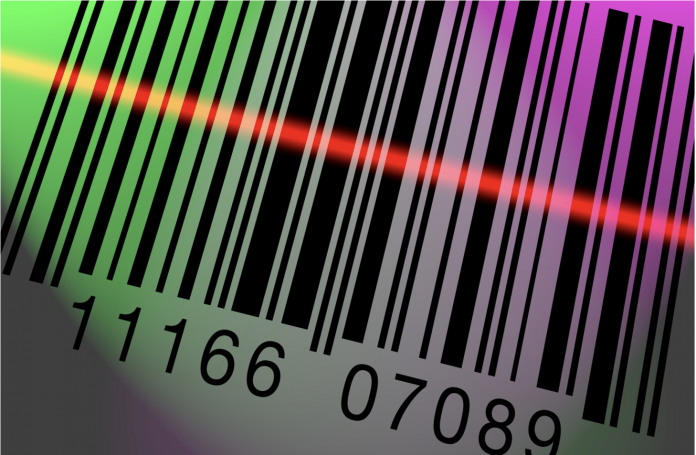Most people are familiar with barcodes either from working in the retail industry or shopping as a customer. Barcodes are a standard part of sales transactions and most businesses can’t function without them. But did you know there are different types of barcodes?
In fact, since they are used in different industries for various reasons, they play different roles. To learn more about barcodes and their purpose, continue reading below.
What Are Barcodes?
Barcodes are square-shaped images that contain a set of parallel black lines with white spaces in between. Barcode scanners are used to read them.
Barcodes are applied to various products in an attempt to provide fast identification of pricing and other details. They are mainly used in retail stores as an important aspect of the purchasing process. Barcodes are also used in warehouses to track inventory and are used on invoices to help with accounting.
There are two primary types of barcodes, which are 1-dimensional (1D) and 2-dimensional (2D). The 1-dimensional version consists of a series of lines that hold information such as size, product type, and color.
In addition to that, the US Postal Service uses barcodes as a part of universal product codes that are placed on product packaging to keep track of packages.
On the other hand, 2D barcodes are a little different. Not only do they include information pertaining to the price and quantity of a product, but they also include an image.
Therefore, a standard barcode scanner can’t read them. Only image scanners and smartphones are able to translate 2D barcodes.
In addition to the two main types of barcodes, there are at least a dozen other barcode variations. You can even create a barcode scanner in c#.
The Advantages of Barcodes
Barcodes aren’t just beneficial for identifying products and speeding up sales transactions. They include other advantages, such as:
Reduced Training
Since barcodes are so simple to scan, they make it super easy for employees to operate checkout lines. The only thing that workers have to do is point and click. The code and scanner do the rest of the job.
Therefore, it doesn’t require extensive training for employees to learn how to use barcodes and scanners. Plus, they don’t have to retain any product information. All of the data is stored within the codes.
Cost-Effective Labeling
It’s easy and affordable to generate barcodes. These days, it’s done in multiple ways— which is a huge benefit. Since there isn’t any expensive equipment needed to create barcodes, it saves a ton of money for businesses.
Inventory Control
Barcodes help to cut down on the hassle of tracking inventory. The ability to scan the codes provides a more accurate count. Understanding how many products the company has allows businesses to know exactly how much or how little of a product they need.
Quick Data
Barcodes allow companies to run smoothly and quickly. Just a small barcode holds tons of information regarding sales and inventory.
With just the click of the scanner, you have the information that you need in a snap. Furthermore, the information is available in real-time, with no waiting.
Improved Accuracy
When humans process data, it increases the chances of errors. However, barcodes provide more accuracy than manual data. As a result, the possibility of mistakes is drastically reduced.
The Different Types of Barcodes
As we briefly explained earlier, there are different variations of barcodes. Here are a few of them:
Code 39
Code 39 barcodes are some of the oldest types of barcodes. They are primarily utilized in the electronic, government, and healthcare industries. It consists of a 1D alphanumeric code that includes a 128 ASC II character set.
Interleaved 2 of 5
This type of barcode is generally found in warehouses and distribution centers. It’s a numeric-only barcode that’s encoded with pairs of numbers. Every two digits are combined to create one symbol, and all of the digits on the barcode must be even in order for it to work.
Universal Product Codes ( UPC)
UPC codes are used on nearly every retail product. They are primarily created for grocery stores to create quick receipts and inventory tracking. Once the UPC number is received, the manufacturer will get a company number to combine with their separate product numbers.
Types of Barcode Scanners
There isn’t a “one-size-fits-all” barcode scanner. One of the main types is the laser barcode scanner, which is primarily used in retail stores.
The only thing the worker has to do is beam the laser light on the barcode and click a button. Laser scanners work best on UPC codes.
There are also image barcode scanners. They are more like video cameras than scanners. The camera inside of it takes a photo of the barcode rather than using a laser to shoot it.
Image scanners are more efficient because they can read the barcode no matter which way the product is put in front of it. They drastically increase the speed of scanning.
To select the proper scanner, there are certain things you have to ask yourself. Think about how you need to use the scanner.
How many products will you need to scan? What are the sizes of the products? All of those questions will decide how the process will go when you’re scanning inventory.
The Different Types of Barcodes Explained
Hopefully, the information above gives you insight into the different types of barcodes. The world simply wouldn’t run as smoothly without them.
If this information was helpful, feel free to read more of our blog. We publish a variety of articles to help educate and inform our readers.

